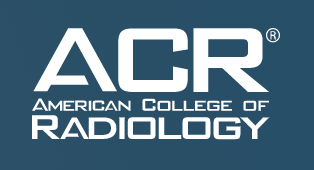New Landmark Recommendations Announced for Addressing Actionable Incidental Findings
 The American College of Radiology (ACR) and the American College of Emergency Physicians (ACEP) released new landmark recommendations for addressing actionable incidental findings (AIFs) in emergency department imaging.
The American College of Radiology (ACR) and the American College of Emergency Physicians (ACEP) released new landmark recommendations for addressing actionable incidental findings (AIFs) in emergency department imaging.
There were more than 150 million emergency department visits in the United States in 2019. According to 2017 data from the National Hospital Ambulatory Medical Care Survey, radiologic imaging was performed in more than half of these type of encounters. AIFs, defined as masses or lesions, detected by an imaging examination performed for an unrelated reason, are often encountered. However, the reporting and communication of these findings can be challenging.
“Unlike other specialties, emergency physicians focus on addressing a patientʼs possible life-threatening conditions and are less directly involved in follow-up care,” said Susan E Sedory, MA, CAE, Executive Director and CEO of ACEP. “Partnerships at the national and local level can enhance information sharing to help ensure all patients receive the ongoing, quality care they need.”
The white paper, “Best Practices in the Communication and Management of Actionable Incidental Findings in Emergency Department Imaging,” published in the Journal of the American College of Radiology, concentrates on four areas of consensus between the specialties: 1) report elements and structure; 2) communication of findings with patients; 3) communication of findings with clinicians; and 4) follow-up and tracking systems.
“Strong communication and collaboration between clinicians when addressing actionable incidental findings is key to providing optimal patient care and preventing adverse outcomes,” said William T Thorwarth Jr, MD, FACR, CEO of ACR. “The recommendations created by ACR and ACEP highlight a multispecialty effort between radiology and emergency medicine that aim to improve the reporting and communication of AIFs, which will ultimately benefit the patient.”
“Radiologists are committed to working with our emergency department and primary care colleagues to improve follow up for incidental findings,” said Gregory Nicola, MD, FACR, chair of the ACR Commission on Economics. “This is a team effort to ensure that we implement and maintain these recommendations to help us provide the best possible care for patients before, during and after they visit the emergency department.”
“Imaging is an integral part of emergency care, and incidental findings with recommended follow up are common,” said Christopher L Moore, MD, professor of emergency medicine, Yale School of Medicine. “Collaboration between emergency medicine and radiology and a systems approach are essential to ensure that actionable incidental findings don’t fall through the cracks. We are proud to have brought together a diverse group, including radiologists, emergency physicians and patient advocates to develop and define best practices to address AIFs.”
The recommendations listed in the white paper are meant to be best practices and are not standards.